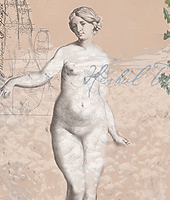Purify Yourself
Since ancient times, humans have incorporated detoxification practices to cleanse both the body and the min.

What is Toxicity?
A toxin is basically any substance that creates an irritating or harmful effect in the body. Toxicity occurs when the body cannot effectively eliminate or neutralize a toxin. Dosage, frequency of exposure and potency of the toxin play a role in the overall negative effect.
Toxicity occurs on two basic levels: internal and external. On the internal level, our body produces metabolic waste and byproducts, such as uric acid and lactic acid, through its normal everyday functions. Cells generate a host of substances that are removed by the organs of elimination: the intestines, liver, kidneys, lungs, skin and lymphatic system. External toxicity can be acquired by breathing, ingesting or having physical contact with toxins.
According to the World Health Organization, hundreds of millions of pounds of chemicals enter the environment yearly. Industrial pollutants, smoke, pesticides, synthetic fertilizers, heavy metals, plastics, petrochemicals and drugs make their way into the air, soil and water, which, in turn, enter the food chain, surroundings and atmosphere.
Although the human body is quite hardy, eventually thresholds are reached and sickness ensues. Some believe that toxicity not only leads to an increased body burden but also causes eventual disturbances in DNA and the genetic blueprint. Many speculate that the dramatic increases we now see in allergies, autoimmune diseases, cancer, degenerative and mental illnesses are related to toxins.
PDF Table of Toxins: Their Effects on the Body and How You Can Get Rid of Them
The Do's and Don'ts
Detoxification is a relative term. Anything that supports our body's elimination of toxins can be said to help us detoxify. Drinking pure water, eating organic fruits and vegetables, reducing processed foods, skin brushing, exercising and maintaining regular bowel movements are essential. Therapeutic detoxification under the supervision of an experienced physician may include specific techniques and prescriptions appropriate for one's condition and current state of health. It is important to choose detoxification therapies that are not too extreme or too subtle. If difficulties arise, adjusting or stopping the program may become necessary.
Detoxification is most effective in an environment when both body and mind are focused and engaged with little or no added commitments or responsibilities. The fall and spring have historically been times to initiate these treatments; however, one can also follow one's own natural cycle. Try to keep the body warm and comfortable, and the mind feeling as nurtured as possible (see below). Rebuilding and strengthening techniques must always follow cleansing.There are various contraindications for detoxification, and one must not go to extremes, which are unsafe and counterproductive. Detoxification is best avoided or used only under careful professional observation for menstruating, pregnant or lactating women, the very elderly, patients recovering from recent surgery, those using certain drugs, as well as patients with psychosis, wasting and end-state disease, severe anemia or severe liver, kidney, digestive, heart or lung diseases.
Detoxification Reactions
The body may initially react to a cleanse in what is called a "healing crisis," which can last several days to two to three weeks depending on the technique used and initial level of toxicity. In general, healing crises are welcome signs that the body is responding to the therapy. Symptoms may include fever, headaches, muscle and joint aches, fatigue, skin eruptions, gas and bloating, constipation or diarrhea, bad breath and mood swings. Many patients incorrectly discontinue treatment at this point in fear that they are getting worse or with the belief that they are experiencing negative side-effects. In fact, the opposite is true. If one persists, one eventually feels much better.
The Gastrointestinal Tract
"Death lurks in the bowels," is an ancient saying referring to the significance that the gut has on one's overall health. The stomach, small and large intestines are a source of many ailments and a cause of many symptoms. Restoring the shape, tone and function of the intestines, establishing proper pH and flora, normalizing bowel movements and removing excess mucus and inflammatory byproducts is crucial for success in all chronic diseases.
Detoxification procedures for the bowels include supervised fasting, colon irrigation or enemas (a quantity of fluid infused into the rectum through a tube passed into the anus), cleansing herbs and teas, probiotics, bentonite clay, psyllium, activated charcoal, abdominal massage and strengthening exercises, visceral manipulation (manipulation of abdominal cavity organs) and adequate water intake. Of course, a whole-food, organic diet is mandatory.
The Liver and Gallbladder
Responsible for literally more than 500 different functions, the liver is second only to the brain in terms of complexity and importance. In this day of high toxic burden, the liver is constantly working.
Liver cleansing can include the use of a myriad of western, Chinese or ayurvedic herbs such as milk thistle, dandelion root and bupleurum. Castor oil compresses, coffee enemas (without cream or sugar) and the dreaded liver/gallbladder flush using lemon or apple juice, garlic and olive oil are stronger interventions. A variety of homeopathic remedies are also available. Ask your natural health-care provider or check with your local health food store.
The Kidneys and Bladder
These organs are an important avenue for elimination and should be kept healthy. Herbal detoxifiers include gravel root, parsley, dandelion leaf, poria, uva ursi, rehmania and goldenrod. A ginger compress applied to the back is a useful technique for drawing toxins out of the kidney area. Drinking one to three litres of pure water daily is essential to long-term kidney health.
The Lungs
Breathing is synonymous with life. High dairy intake, smoking and air pollution contribute to excess mucus and lung disease.
Lung-cleansing therapies include botanicals, lotus root tea, mullein, wild cherry, licorice root and fenugreek. Mustard plasters are effective. Inhaled ionized (energetically charged) oxygen, segmental neural therapy (the injection of local anesthetics to stimulate the body's healing abilities) and acupuncture are potent considerations; these three therapies are available through health-care professionals.
The Sinuses
Chronic sinus congestion, infection and associated head pain is rampant in our society. Many sinus disorders are related to food intolerances, digestive dysfunction and lung problems and, therefore, improve when these underlying concerns are dealt with.
Sinus lavage (rinsing) with salt, baking soda, homeopathic remedies or plain water is effective. A neti pot, an ayurvedic container specifically used for cleansing the sinuses, can be purchased. Essential oils, humidifiers, sinus neural therapy and acupuncture are other stronger possibilities.
The Lymphatics
Part of the circulatory and immune systems, lymphatics are comprised of lymph nodes and vessels strategically placed all over the body. Lymph cleanses are particularly recommended during or after acute illnesses.
Regular exercise, such as walking or rebounding, is an excellent way to maintain lymph drainage. Deep breathing exercises, whole-body massage, Vodder manual technique (a series of rhythmic, light strokes along the lymphatic vessels and surrounding tissues) and herbs such as red clover, echinacea and thuja are further choices.
The Skin
Skin cleansing has been done for centuries using herbs, saunas and sweat lodges. The tissue below the skin can be a major depository for toxic substances, especially if the other organs are not capable of processing and eliminating these compounds.
Skin brushing with a natural bristle brush is a very potent cleansing technique. Five minutes twice daily while avoiding sensitive areas, such as the face and genitals, is ample time. Baking soda, Epsom salts or hydrogen peroxide added to a bath could be used one to three times weekly. The use of a sauna interspersed with cold-water showers is one of the best methods. An assortment of hydrotherapies (water therapies) can also be applied. Last but not least, adequate exposure to sunshine and fresh air are vital.
The Mind
Mental detoxification is also important. Relieving our minds of negative thought patterns and replacing them with positive ones helps instill greater mental clarity. Rest, respite, recreation, meditation and prayer can contribute to overall wellness.
Many other strategies for detoxification exist such as chelation therapy (intravenous or oral use of chelating agents to remove toxins), magnetic therapy, cupping (a traditional Chinese technique), supplements and nutraceuticals.
The use of detoxification methods can sometimes make the difference between an effective healing program and endless frustration. Read on in this issue of alive for more information about fasting and cleansing foods and herbs.




